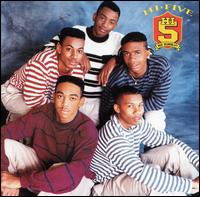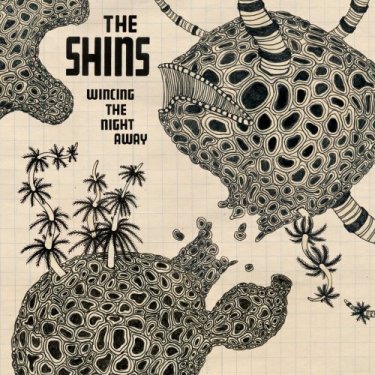Entries in Trademark Infringement (368)
Western District Grants 30-Day Stay in Autodesk v. Open Design Alliance
As expected, the Western District has granted the parties’ joint motion for a 30-day stay of the Autodesk v. Open Design Alliance trademark infringement and false designation of origin case. The parties requested the stay so they can try to finalize their settlement. STL recently wrote about the parties’ request here. Terms of the likely settlement are not known (to me, that is).
For Those About to Rock: Think About Trademark Law (Pt. 3)
Ok, enough about band names. That’s what I thought to myself after I posted my second installment last week about youthful musicians who get into trademark trouble when they select a name for their band without making sure no one else has already adopted it. But when a lawsuit about a band’s name is filed right in my own backyard, I couldn’t help myself.
On February 26, Seattle-based Amazon.com filed suit in the Western District against musicians Treston Irby, Russel Neal and Marcus Sanders. Those persons, along with Tony Thompson and Roderick Clark, toured and recorded under the name “Hi-Five” from approximately 1990 to 1997. In the late 1990’s, the band broke up for good and Mr. Thompson formed a new band with other members that he also called “Hi-Five.”
 In 2005, three members of the old “Hi-Five” sued Mr. Thompson and the other members of the new “Hi-Five” in the Southern District of New York, alleging various forms of trademark infringement. The three old “Hi-Five” members also named Amazon.com in the suit on the theory that Amazon.com had infringed the HI-FIVE name and mark by selling HI-FIVE-branded CDs released by the new “Hi-Five” members. In 2006, Amazon.com allegedly paid each $1,000, obtained a release, and was dismissed from the suit with prejudice.
In 2005, three members of the old “Hi-Five” sued Mr. Thompson and the other members of the new “Hi-Five” in the Southern District of New York, alleging various forms of trademark infringement. The three old “Hi-Five” members also named Amazon.com in the suit on the theory that Amazon.com had infringed the HI-FIVE name and mark by selling HI-FIVE-branded CDs released by the new “Hi-Five” members. In 2006, Amazon.com allegedly paid each $1,000, obtained a release, and was dismissed from the suit with prejudice.
Thereafter, the three old “Hi-Five” members apparently learned that Amazon.com was again selling an album produced by the new “Hi-Five” under the HI-FIVE name and mark, to which the three old “Hi-Five” members objected. Amazon.com claims the CDs in question were being marketed through its “Marketplace” program by third-party sellers with whom Amazon.com had no connection or control. Amazon.com also claims when it learned the allegedly infringing CDs were being sold, it removed those items from its website. Amazon.com alleges the three old “Hi-Five” members nonetheless sent Amazon.com a letter demanding “payment of $100,000, presumably in exchange for a second release or settlement….”
In response, Amazon.com filed suit against the three old “Hi-Five” members seeking a declaratory judgment that it owes them nothing more than it has already paid.
Two lawsuits in two years is a lot of litigation for a band. Would either of these suits have been filed if only Mr. Thompson had identified his new group with a new name?
Autodesk and Open Design Alliance Discuss Settlement
Autodesk and Washington-based Open Design Alliance are trying to mend their ways. On February 23, they jointly asked the Western District to stay Autodesk’s infringement case for 30 days so they can “complete their ongoing settlement discussions.”
Their filing states: “These ongoing negotiations, which have taken time due to the number and location of entities and individuals involved, have been productive. The parties are now in the process of drafting final settlement documents and are optimistic that this will resolve the matter with finality.”
As STL reported in December, Autodesk previously alleged that Open Design Alliance infringed its AUTODESK registered trademark and falsely designated the origin of Open Design Alliance’s computer aided design software by using Autodesk’s proprietary file format and similar authentication process. On November 22, Western District Judge Marsha Pechman granted a TRO against the Open Design Alliance, finding that Autodesk had demonstrated both a strong likelihood of success on the merits and the possibility of immediate, irreparable injury from the Open Design Alliance’s simulation of Autodesk’s software.
The parties’ request comes after Autodesk moved for a preliminary injunction but before Open Design Alliance’s opposition was due. If the parties’ settlement talks fail, the parties say Autodesk will answer Open Design Alliance’s counterclaims and Open Design Alliance will respond to Autodesk’s motion for preliminary injunction.
TTAB Hears Oral Argument in Hormel v. Spam Arrest Cancellation Proceeding
Yesterday, the Trademark Trial and Appeal Board heard oral argument in the cancellation proceeding Hormel Foods brought against Seattle-based Spam Arrest over the registration of SPAM ARREST as a trademark. STL attended the hearing in New York, where the Board presided in a special sitting.
 Here’s some case background: Spam Arrest, LLC, makes software that reduces unsolicited commercial email, otherwise known as “spam.” In 2003, it obtained Registration No. 2701493 for SPAM ARREST in International Class 009 for “computer software, namely, software designed to eliminate unsolicited commercial electronic mail.” In doing so, Spam Arrest disclaimed any trademark rights to the word “spam.” It allegedly began using the mark in commerce in 2002.
Here’s some case background: Spam Arrest, LLC, makes software that reduces unsolicited commercial email, otherwise known as “spam.” In 2003, it obtained Registration No. 2701493 for SPAM ARREST in International Class 009 for “computer software, namely, software designed to eliminate unsolicited commercial electronic mail.” In doing so, Spam Arrest disclaimed any trademark rights to the word “spam.” It allegedly began using the mark in commerce in 2002.
 Hormel Foods Corp. and Hormel Foods, LLC, make the well-known canned meat products sold under the registered trademark SPAM. Hormel allegedly began using SPAM as a trademark in the 1930’s. Since then, it has expanded its and its licensees’ use of SPAM beyond canned meat products to include a wide range of goods, such as t-shirts, video games, a downloadable screen saver, and a Broadway show. It now owns a “family” of SPAM registrations, including SPAMARAMA, SPAMBURGER, and SPAMTASTIC.
Hormel Foods Corp. and Hormel Foods, LLC, make the well-known canned meat products sold under the registered trademark SPAM. Hormel allegedly began using SPAM as a trademark in the 1930’s. Since then, it has expanded its and its licensees’ use of SPAM beyond canned meat products to include a wide range of goods, such as t-shirts, video games, a downloadable screen saver, and a Broadway show. It now owns a “family” of SPAM registrations, including SPAMARAMA, SPAMBURGER, and SPAMTASTIC.
In May 2003, Hormel filed a petition to cancel Spam Arrest’s registration on grounds of dilution and likelihood of confusion. In its answer, Spam Arrest denied Hormel’s claims, primarily arguing that “spam” is generic, that the public is not likely to confuse a maker of software with a maker of meat products, and that Hormel had either acquiesced or sat on its rights in allowing the word “spam” to become a synonym for unwanted commercial email. Thereafter, Spam Arrest conceded that Hormel’s trademark is famous.
(Additional background on the case, Cancellation No. 92042134, is available in the Patent and Trademark Office’s TTABVUE database, as well as here and here.)
Friday’s hearing was presided over by TTAB Chief Judge David Sams, Judge Ellen Seeherman, and Judge Gerard Rogers.
Hormel began its argument by stating it coined the term SPAM 70 years ago. Therefore, when the consuming public first heard the term, it exclusively thought of Hormel. Today, it argued, brand awareness of SPAM is “nearly universal,” with “up to 100 percent” of consumers surveyed associating it with Hormel.
Hormel did not dispute that “spam” is generic for unwanted commercial email. Yet, it argued that “44.7 percent” of consumers still have “Hormel and the famous brand come to mind” when encountering “spam” in this generic context.
The board mainly questioned Hormel on dilution and likelihood of confusion. In particular, the board asked whether the generic portion of a mark is even capable of causing dilution. The board also questioned whether consumer confusion is likely when the public has come to associate the brand with Hormel and the generic term with unsolicited commercial email.
On the dilution claim, Chief Judge Sams asked: Both sides conceded it is a generic term. Can you have dilution when a term is generic?
Hormel responded: Yes. “Spam” is not the generic or common name of computer software of any kind. SPAM ARREST is a weak trademark. It is irrelevant that SPAM is disclaimed because you have to consider the entire trademark.
Later, Chief Judge Sams asked: Can anyone use SPAM in a generic sense? Doesn’t your position sound like a right in gross?
Hormel responded: For famous marks, it does get pretty close to a right in gross. Dilution is the appropriate remedy for a mark like SPAM.
On likelihood of confusion, Judge Seeherman asked: Don’t we have two different meanings for the marks?
Hormel: Not really. The brand SPAM when used on all things still carries a meaning quite apart from canned meat. There’s an iconic statement about it. I don’t want to limit the meaning to canned meat.
Judge Seeherman: When the defendant uses SPAM for a product that filters unwanted email?
Hormel: That’s defendant’s intended meaning. But if someone sees SPAM ARREST, the likelihood is that people will think there is some sponsorship or affiliation with Hormel.
Spam Arrest began its argument by stating: This case presents an issue the Board has not considered. May the owner of a famous trademark that’s also a generic term prevent a party from using the mark in the generic sense?
It argued that its registered mark should be considered as a whole, stating: SPAM and SPAM ARREST are not seen as essentially the same.
Spam Arrest also argued that any “whittling away” of SPAM’s distinctiveness occurred “long before Spam Arrest used SPAM” in its trademark because consumers began to associate “spam” with unwanted commercial email fifteen years ago. Spam Arrest likened the public’s association with unwanted email as an ocean and Spam Arrest’s influence on that use as a raindrop in the ocean.
Judge Seeherman asked: Because SPAM has two meanings, does that mean you can’t have dilution?
Spam Arrest: No. When “spam” is used in connection with a generic term, consumers recognize it’s used in connection with obnoxious email. When the word “spam” is used in connection with spam-elimination software, dilution is impossible. Any dilution has already occurred. Spam Arrest doesn’t make a dent in the dilution that has already occurred.
Judge Rogers asked: Hormel seems to refer to “spam” as a slang term. Spam Arrest’s definition doesn’t show the word is slang. Is it still a slang term or is it part of the current lexicon?
Spam Arrest: It’s not a slang term. Hormel’s brief says it’s a generic term. Both sides submitted dictionary defintions saying it means unwanted commercial email.
The Board then questioned Spam Arrest on its contention that Hormel’s survey evidence is unreliable because, among other things, it was based on a mall survey. Judge Seeherman, in particular, asked why that constituted a flaw. Spam Arrest responded that since SPAM products are sold in shopping malls and Spam Arrest’s software is only sold through the Internet, the results were skewed in Hormel’s favor. Judge Seeherman asked if any anti-spam software was sold in malls. Spam Arrest answered that such software was available at stand-alone stores like CompUSA but generally was not available in malls.
Finally, Judge Rogers asked about Spam Arrest’s acquiescence defense. Spam Arrest responded that Hormel had posted a statement on its website (apparently gone now) that it did not object to the public’s use of “spam” as a slang term referring to unwanted email, and has never attempted to stop the public’s use of the term in that way.
Judge Seeherman asked if Hormel had ever told Spam Arrest in particular it could use “spam” as part if its trademark. Spam Arrest responded that Hormel had “told the world” that it was ok to use “spam” as a generic term and that Spam Arrest was a subset of that population. Spam Arrest later conceded this evidence better supported its laches defense.
Both sides argued for 30 minutes (and probably longer). Both made very good presentations. It also was clear that the panel was well-prepared. The case is now in the panel’s hands. My strong suspicion is the panel will uphold the PTO’s decision to register SPAM ARREST and deny Hormel’s petition due to the widespread generic use of the term. That’s how I would decide the case if I were on the panel.
The hearing was attended by approximately 75 persons as part of the Practising Law Institute’s excellent continuing legal education program entitled, “Navigating Trademark Practice Before the PTO 2007: From Filing Through the TTAB Hearing.”
N.B.: Attendees were told not to record the proceeding. Therefore, I had to resort to taking notes as fast as I could. It was a little easier for me to take down Hormel’s argument than Spam Arrest’s because Hormel’s attorney spoke a little slower. It was a little easier to take down questions from Chief Judge Sams and Judge Seeherman than Judge Rogers for the same reason. Though I made every effort to be accurate, the statements in this post attributed to various speakers are likely not perfect. That’s why I generally did not use quotation marks.
For Those About to Rock: Think About Trademark Law (Pt. 2)
Last week, STL blogged about upstart bands who were forced to change their name after they started getting popular. Unfortunately, that’s the point when some other band comes out of the woodwork and claims to have adopted the same name years earlier. Even Nirvana wasn’t immune to this problem.
It’s understandable that a brand new band playing at the corner bar doesn’t think about trademark law when choosing its name. But has any band learned from the painful lessons in trademark law that Nirvana, Dinosaur Jr, Blink 182, and countless others suffered through after they began to achieve commercial success?
The answer is not many. This weekend I searched the PTO database for band names appearing in the College Music Journal’s (CMJ) Top 20 chart for radio play. This list contains the most popular indie bands, some of which are about to make it big-time. Of these 20, only one band has applied for (and in fact obtained) federal trademark registration — the band with the No. 1 record on CMJ’s Top 20: The Shins. Frontman James Mercer owns the registration. (Where that leaves other Shins members Martin Crandall, Dave Hernandez, Jesse Sandoval, and Eric Johnson is probably better left for another post.) No one else has even applied for federal registration, even though the other 19 charted groups undoubtedly perform and sell CDs and t-shirts in many parts of the country. Not even No. 17 The Broken West, which recently changed their name from The Brokedown after receiving a cease-and-desist letter from another band called The Brokedowns.

The Shins: Learning From Others’ Mistakes
Interestingly, this research uncovered a possible future band name dispute — or at least a close call. This week’s No. 8 artist is The Clinic, a Liverpool, UK-based band that released its fifth album last October (and that notably performs wearing surgical masks). Effingham, Illinois, physician Peter Bonutti owns a federal registration for THE CLINIC in connection with his band of the same name. Apparently, The Clinic (US) is Dr. Bonutti’s hobby band, since he likely spends most of his time working as an orthopedic surgeon, heading up his 170-employee clinic, and creating his 159 patented inventions (with 60 more patents pending). Dr. Bonutti’s federal registration (Reg. No. 2489257) claims he first used THE CLINIC in connection with “phonograph records and pre-recorded magnetic tapes, cartridges, compact discs, and cassettes” in July 1999. Luckily for the UK-based band, they formed in 1997 and released their first album in 1998. Assuming they made sales in United States commerce before July 1999, The Clinic (UK) at least would have common law rights to their name here. They may have dodged a bullet.
However, luck really shouldn’t have to matter. As the Canadian Trademark Blog recently wrote:
“Before committing to any new brand, appropriate clearance searches should be conducted. The best new brand in the world may not be of much use if it’s infringing on the rights of a competitor — at the very least, the cost of launching the brand could go up significantly — Apple’s launch of its iPhone brand is a classic example. Apple is fortunate enough to have the legal budget to fight those battles. Many businesses don’t.”
Nor do many musicians. To continue the theme from last week, a little trademark due diligence goes a long way — whether you’re an upstart band or an upstart brand.